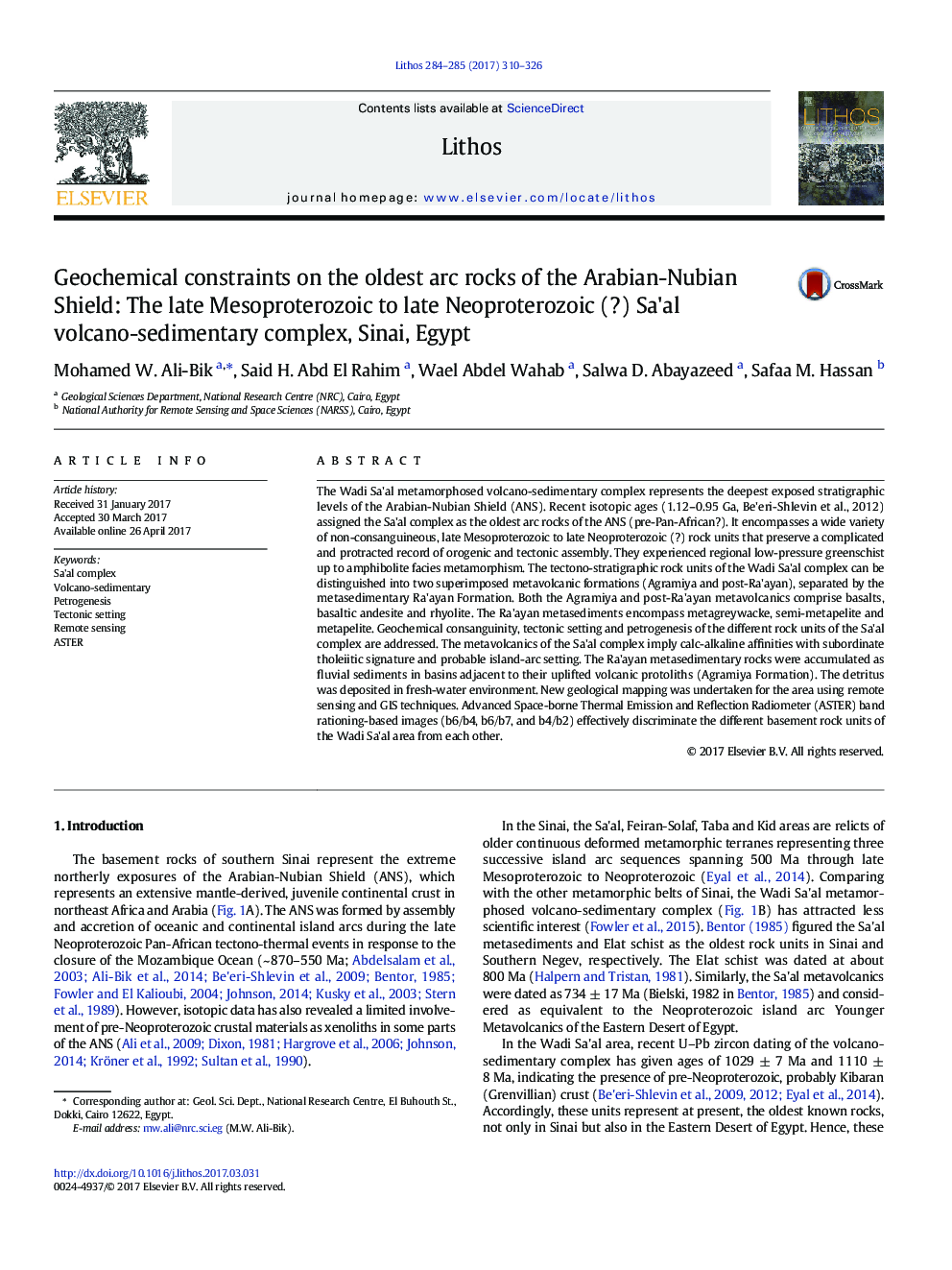| Article ID | Journal | Published Year | Pages | File Type |
|---|---|---|---|---|
| 5784044 | Lithos | 2017 | 17 Pages |
Abstract
The Wadi Sa'al metamorphosed volcano-sedimentary complex represents the deepest exposed stratigraphic levels of the Arabian-Nubian Shield (ANS). Recent isotopic ages (1.12-0.95Â Ga, Be'eri-Shlevin et al., 2012) assigned the Sa'al complex as the oldest arc rocks of the ANS (pre-Pan-African?). It encompasses a wide variety of non-consanguineous, late Mesoproterozoic to late Neoproterozoic (?) rock units that preserve a complicated and protracted record of orogenic and tectonic assembly. They experienced regional low-pressure greenschist up to amphibolite facies metamorphism. The tectono-stratigraphic rock units of the Wadi Sa'al complex can be distinguished into two superimposed metavolcanic formations (Agramiya and post-Ra'ayan), separated by the metasedimentary Ra'ayan Formation. Both the Agramiya and post-Ra'ayan metavolcanics comprise basalts, basaltic andesite and rhyolite. The Ra'ayan metasediments encompass metagreywacke, semi-metapelite and metapelite. Geochemical consanguinity, tectonic setting and petrogenesis of the different rock units of the Sa'al complex are addressed. The metavolcanics of the Sa'al complex imply calc-alkaline affinities with subordinate tholeiitic signature and probable island-arc setting. The Ra'ayan metasedimentary rocks were accumulated as fluvial sediments in basins adjacent to their uplifted volcanic protoliths (Agramiya Formation). The detritus was deposited in fresh-water environment. New geological mapping was undertaken for the area using remote sensing and GIS techniques. Advanced Space-borne Thermal Emission and Reflection Radiometer (ASTER) band rationing-based images (b6/b4, b6/b7, and b4/b2) effectively discriminate the different basement rock units of the Wadi Sa'al area from each other.
Related Topics
Physical Sciences and Engineering
Earth and Planetary Sciences
Geochemistry and Petrology
Authors
Mohamed W. Ali-Bik, Said H. Abd El Rahim, Wael Abdel Wahab, Salwa D. Abayazeed, Safaa M. Hassan,
